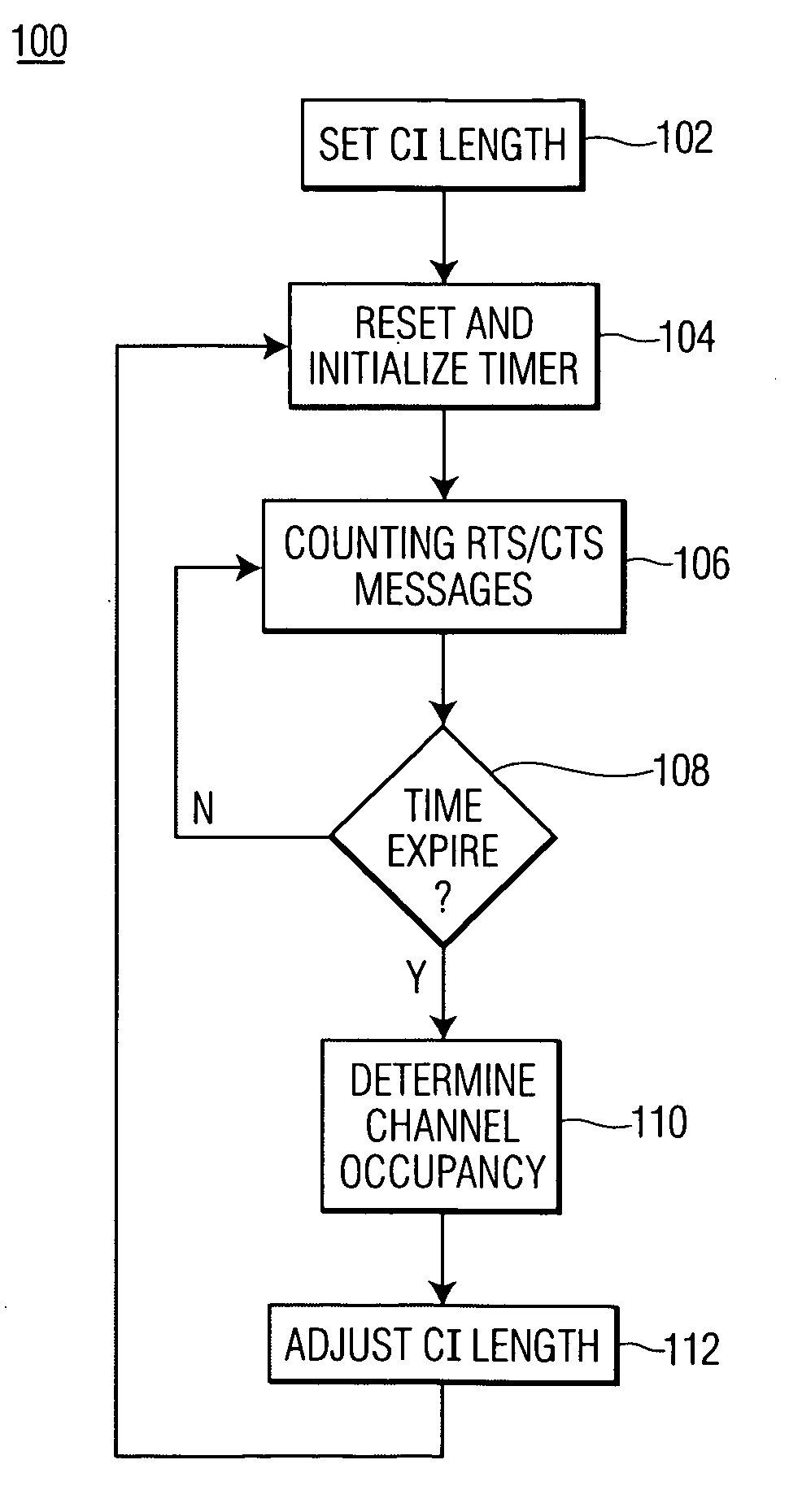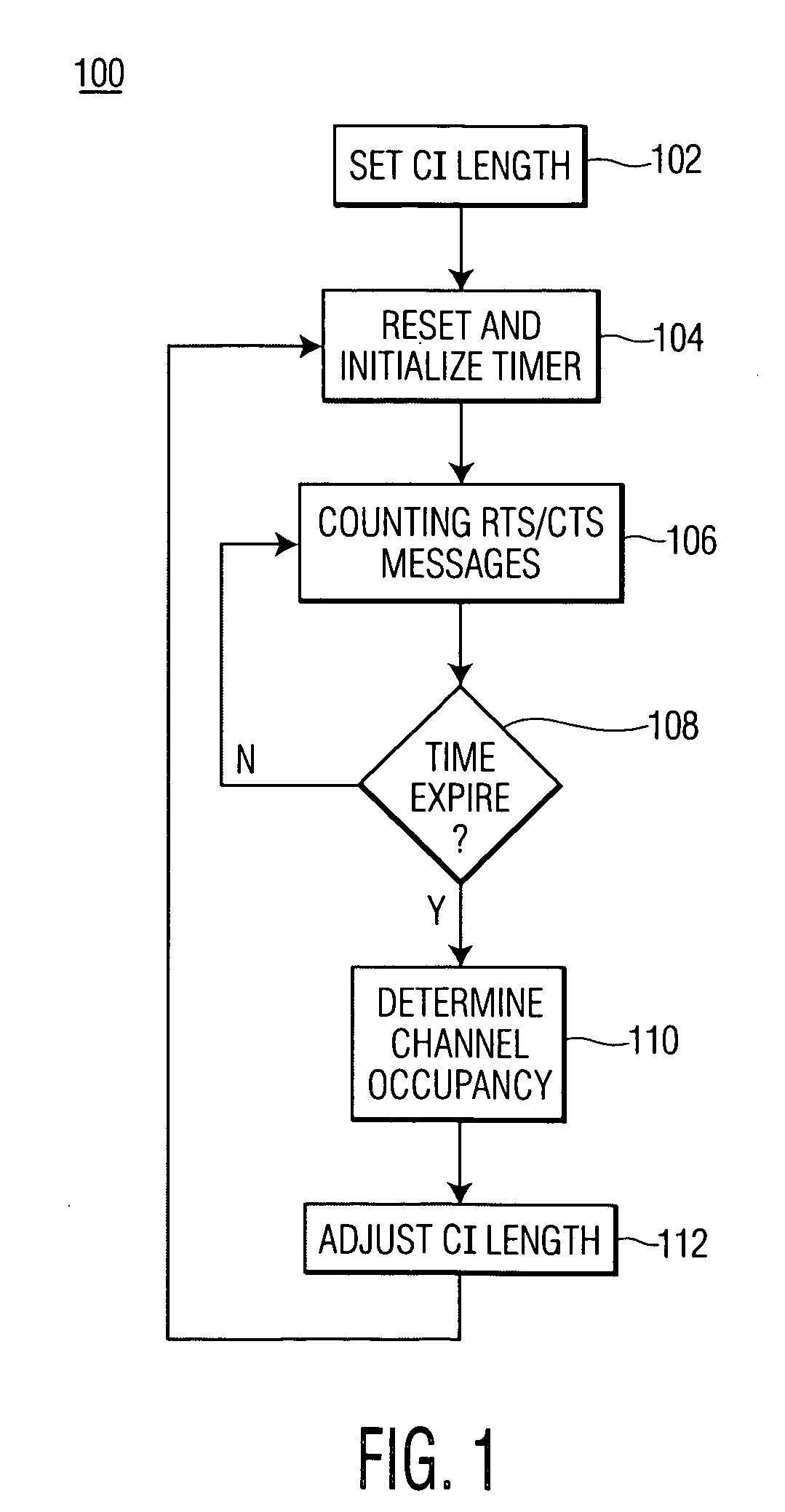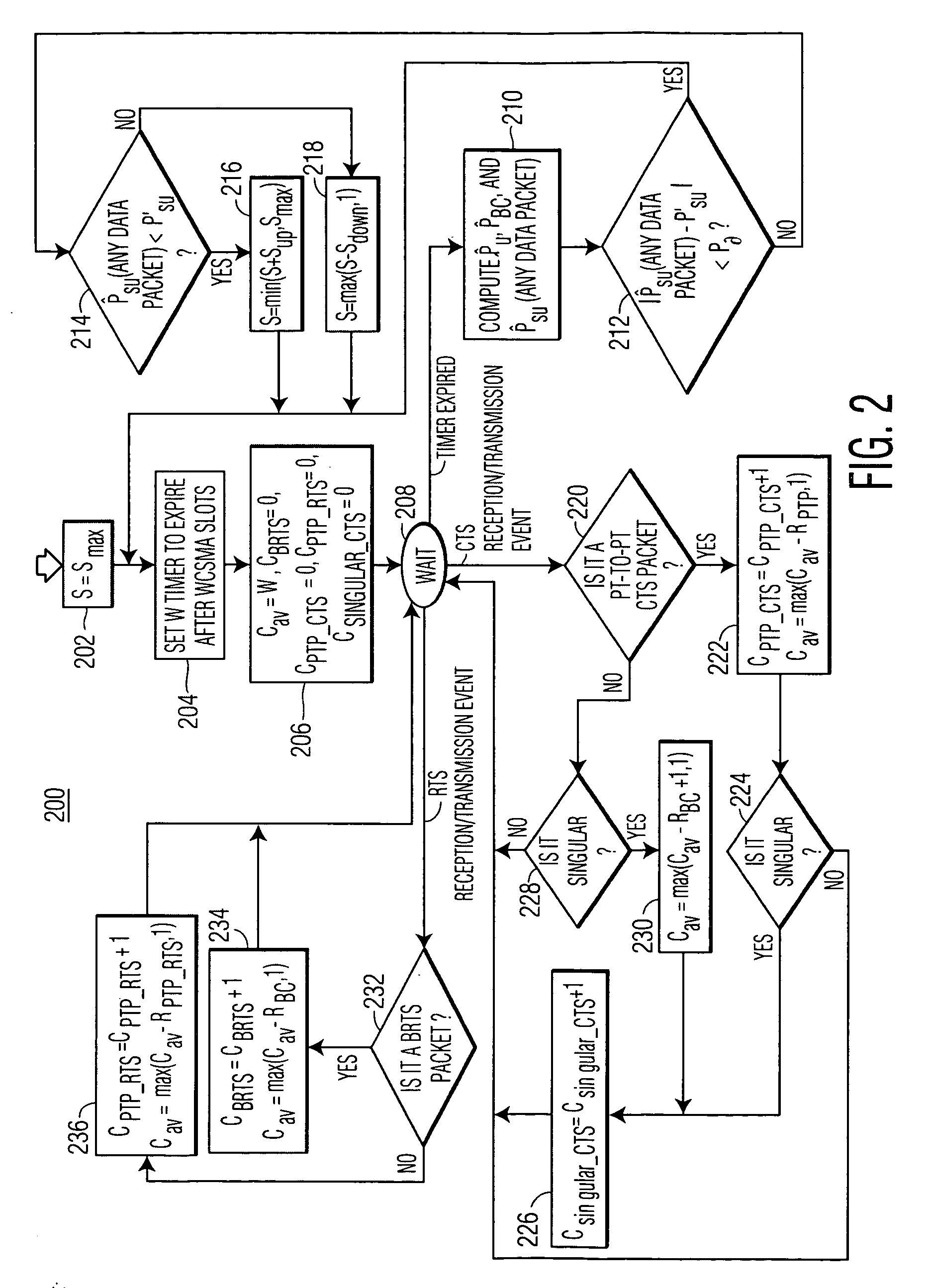Adaptive channel access for carrier sense multiple access based systems
a carrier sense and multiple access technology, applied in multiplex communication, data switching networks, wireless communication, etc., can solve the problems of limited ieee 802.11 protocol performance and increased system load in the network
- Summary
- Abstract
- Description
- Claims
- Application Information
AI Technical Summary
Problems solved by technology
Method used
Image
Examples
Embodiment Construction
[0018]The present invention controls CAR in a CSMA based communications system by adaptively adjusting a length of a contention interval (CI). As will be explained, the invention monitors messages or packets in the channel, determines occupancy conditions of the channel, and adaptively adjusts the length of the CI based on the determined occupancy conditions.
[0019]Referring to FIG. 1, there is shown a method of adaptively adjusting the CI length, generally designated as 100, in accordance with an embodiment of the invention. As will be explained, the probability of a node successfully transmitting a data packet is calculated and the CI length is adaptively adjusted accordingly. Method 100 starts at step 102 by setting an initial CI length in time slots, and in step 104 by resetting and initializing a timer. Method 100 then enters step 106 and counts messages or packets received and transmitted in the channel. The messages counted may include RTS and CTS packets occurring in the chan...
PUM
 Login to View More
Login to View More Abstract
Description
Claims
Application Information
 Login to View More
Login to View More - R&D
- Intellectual Property
- Life Sciences
- Materials
- Tech Scout
- Unparalleled Data Quality
- Higher Quality Content
- 60% Fewer Hallucinations
Browse by: Latest US Patents, China's latest patents, Technical Efficacy Thesaurus, Application Domain, Technology Topic, Popular Technical Reports.
© 2025 PatSnap. All rights reserved.Legal|Privacy policy|Modern Slavery Act Transparency Statement|Sitemap|About US| Contact US: help@patsnap.com



